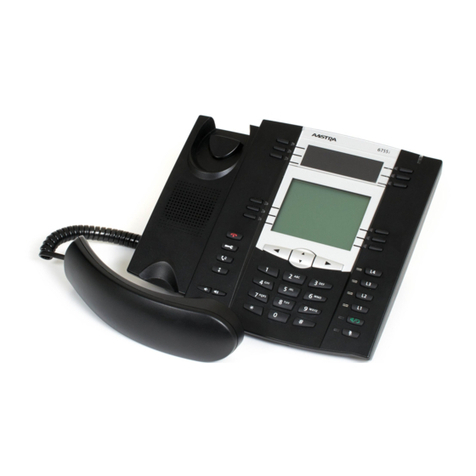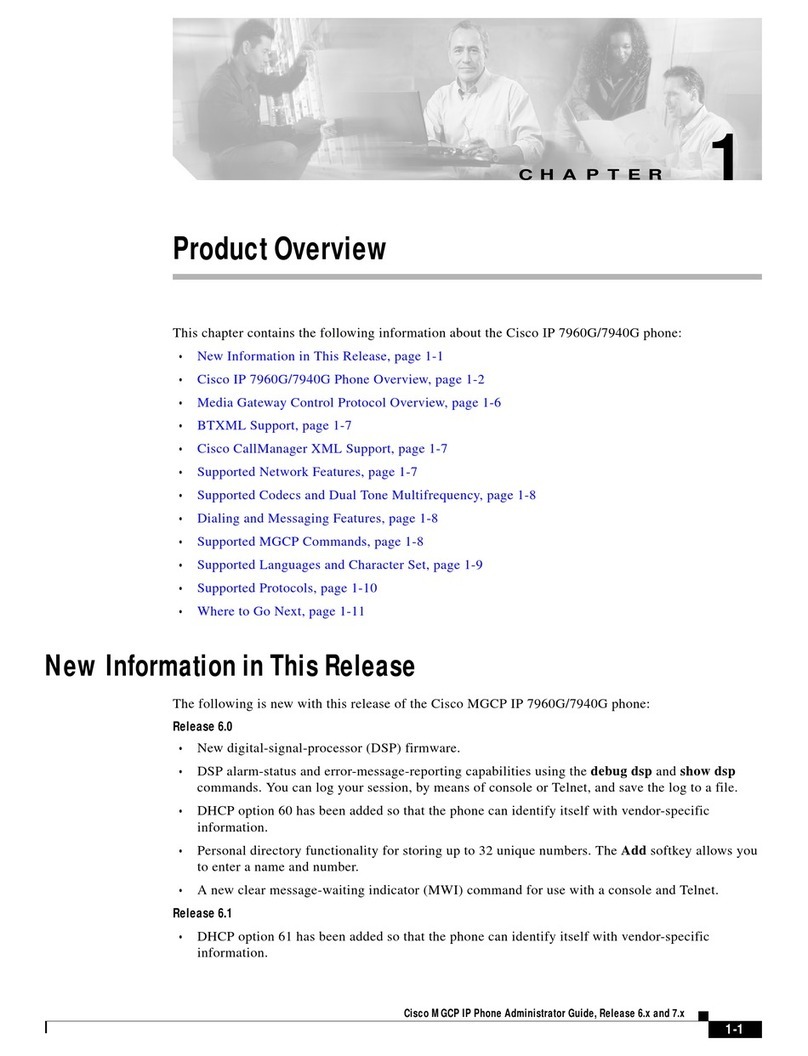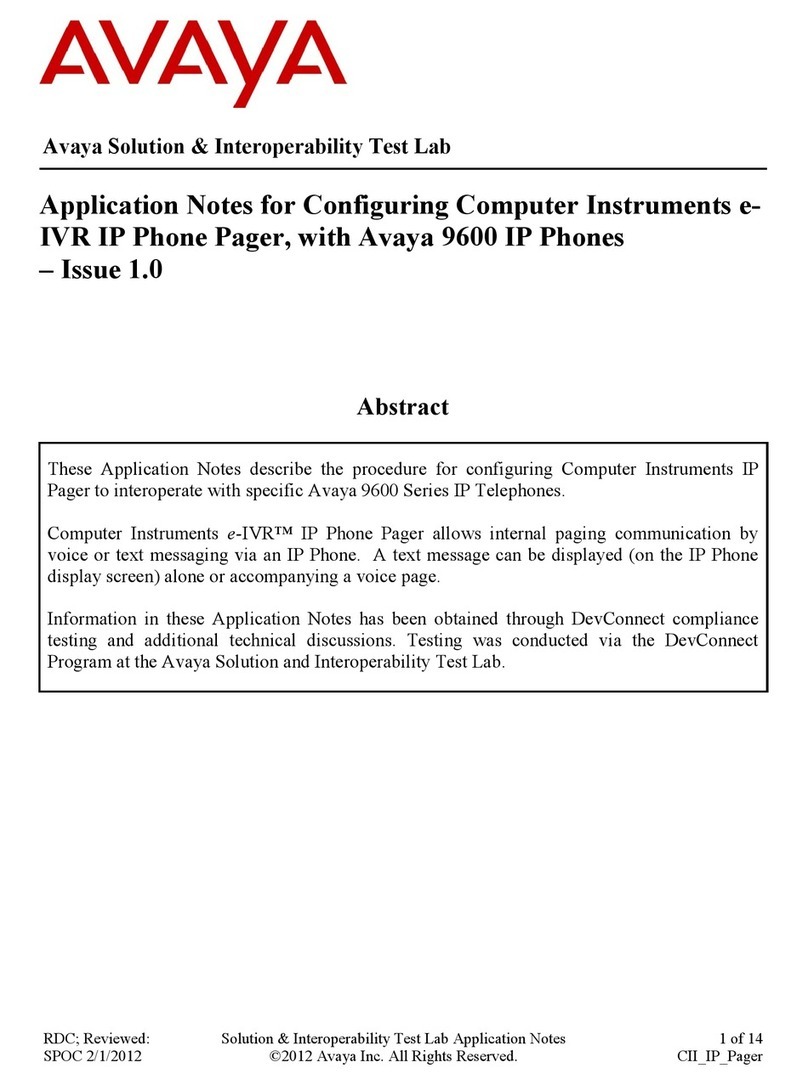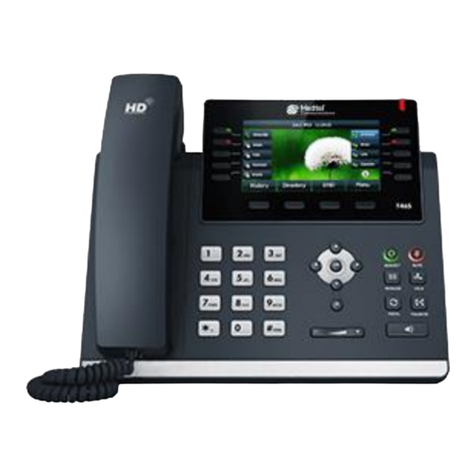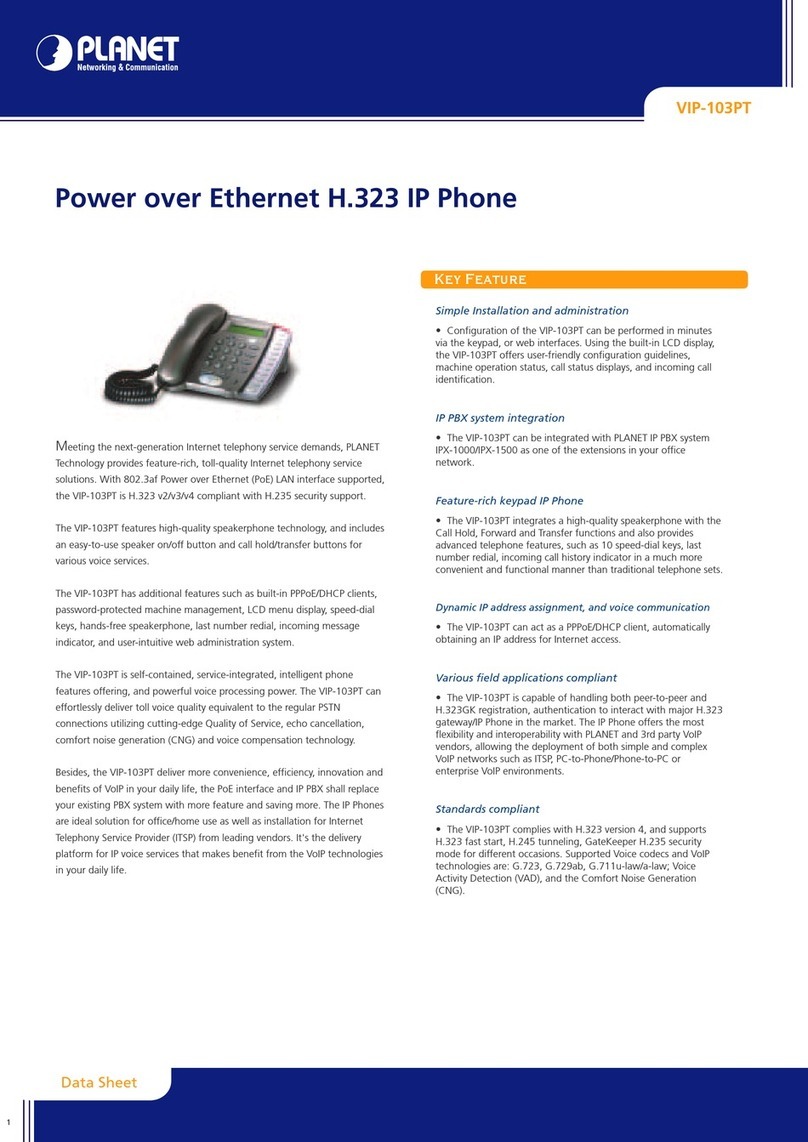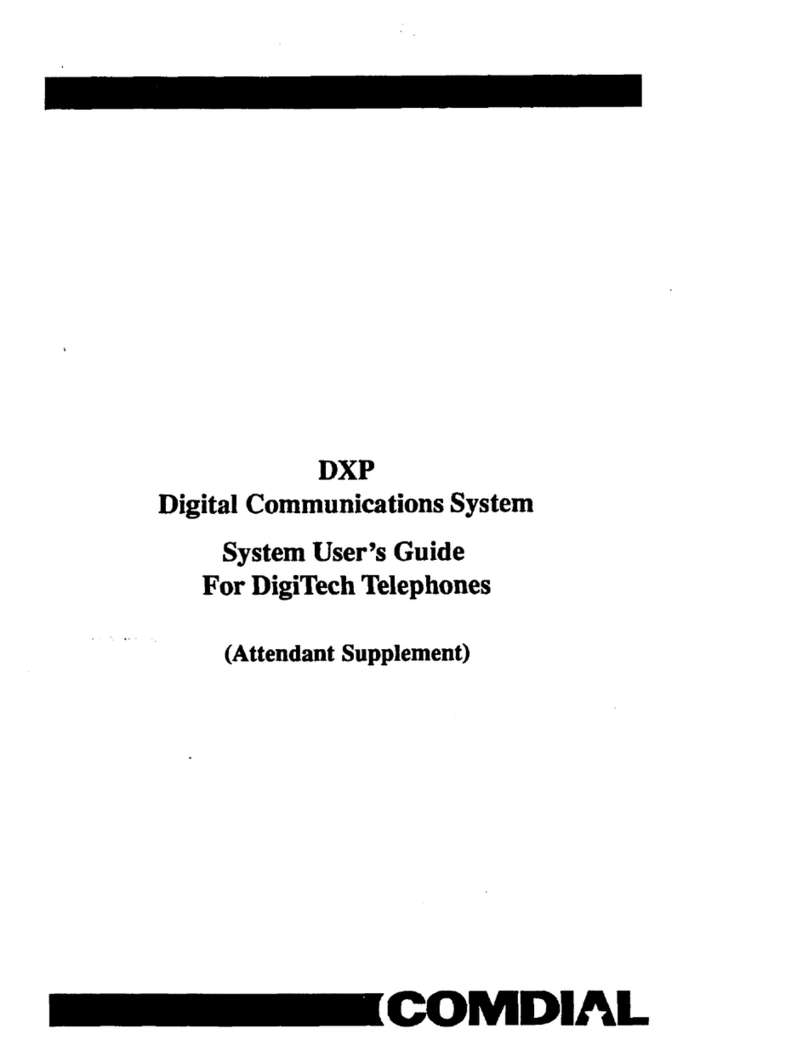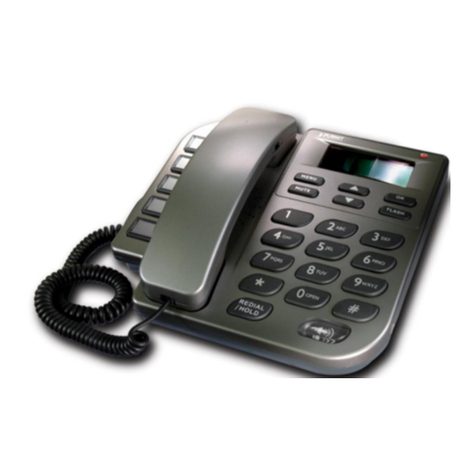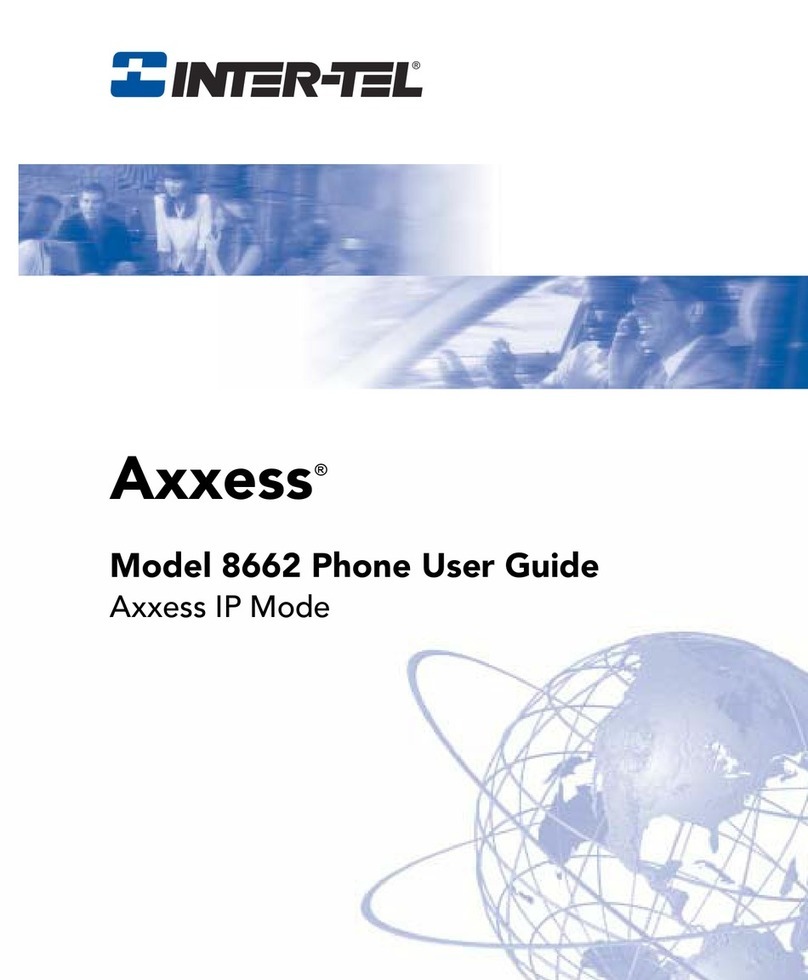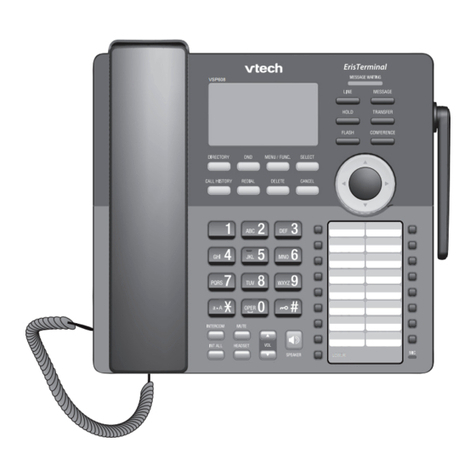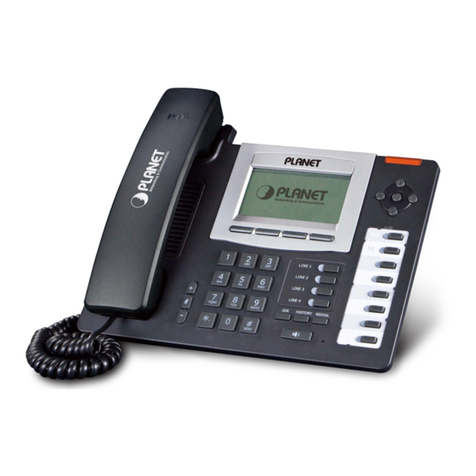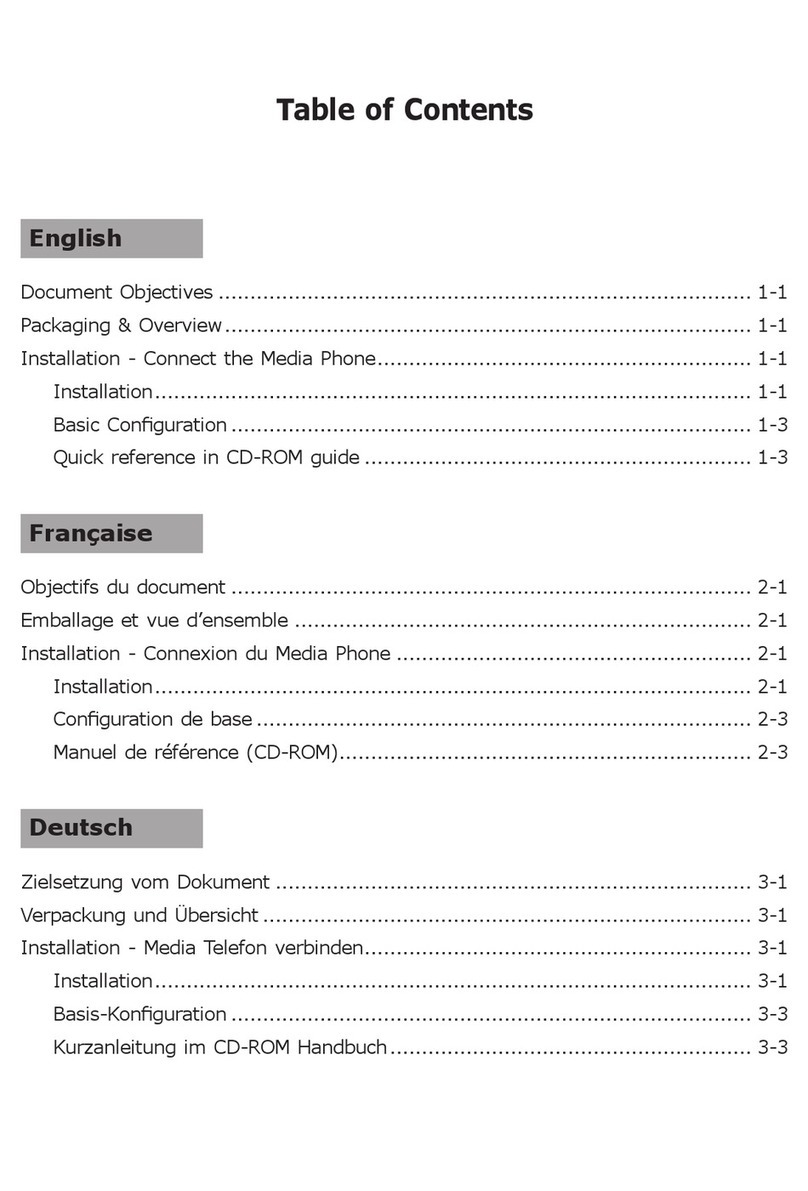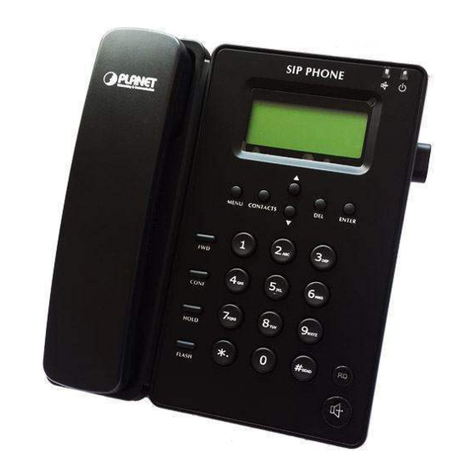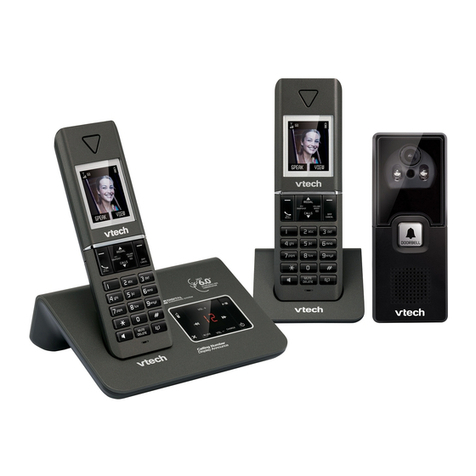Teltone TLS-4A User manual

Chapter 1: Overview
This manual describes the Telephone Line Simulator-4A which tests
telephones and other telecommunications devices.
The TLS-4A Telephone Line Simulator offers a convenient means for setting
up temporary “telephone lines” to demonstrate or test equipment where
actual central office lines are not easily available. The TLS-4A provides four
simulated lines, two “talk paths” or connections, and an audio interface port,
making it a versatile device for a variety of applications including:
•Demonstrating or testing telecommunications devices such as
telephone sets, fax machines, and modems. Two simultaneous,
independent conversations can be set up over the four lines.
•Playing prerecorded presentations over a line when the telephone
handset is lifted (for example, at trade show or museum displays)
•As a teaching aid with the audio port configured to allow monitoring
and/or recording of a telephone conversation (for example, when
teaching children to use “9-1-1”)
•Testing telephone or key system installations
•Limited testing of loop start PBX installations
Static Protection
Use standard precautions in discharging electrostatic buildup before
operating this equipment or any other electrical equipment.
Features
•Programmable operations:
—Two phone numbers for each line
—Forced disconnect
—Hot line (“ringdown”) number
—Ring cadence 1-3 rings
—Hunt groups
—Immediate or dial access to audio port
—Tone or recorded message when an invalid number is dialed
—Monitor mode (allows recording phone calls for training use)
—PBX-like operations: call transfer, add on, hook flash
—Timing adjustments
—Second dial tone simulates outside line access
—Tone following disconnect
•Provides four lines and two connections
•Portability and quick, convenient setup
Reference Manual Chapter 1: Overview
40-400-00033, Rev. A Page 1

•Accepts tone and rotary input
•Ringing voltage source with short circuit protection
•AC powered (battery not required)
•Non-volatile memory (battery not required)
•Generates precise call progress tones
•Ground reference jack
•-48 V ground referenced line voltage
•Audio port
Calling Operations
The TLS-4A provides dial tone to a line when the telephone handset is lifted.
When a rotary dialed or tone digit is detected, dial tone stops. If a number is
misdialed, reorder tone (or another programmable tone) is sent to the caller or
the caller is connected to the audio port (see command 31 on page 34).
When a valid number has been dialed, ringback tone is sent to the caller and
the called line rings. When the called line answers, ringback tone stops and a
connection is established between the parties. When either party goes
on-hook, the off-hook line receives about 2 seconds (default) of silence,
followed by dial tone, or Cutoff on Disconnect. See command 38, Forced
Disconnect, on page 38 for more information.
Physical Description
The TLS-4A is a portable unit weighing just over 4 pounds. A detachable
power cord is supplied with the TLS-4A. As shown in Figure 1, the front panel
provides: four modular RJ-11 jacks for connection of the equipment to be
demonstrated or tested, a multifunction switch (see Table 1), and the
indicators listed in Table 2. A 5-pin DIN jack on the back panel enables
sending or receiving audio to/from any line. The audio is turned on or off by a
software-driven relay. A fused, modular AC power jack and an optional
chassis ground reference point are also located on the back of the unit.
For key telephone and PBX line testing, a modular/alligator clip cable is
available as an ordering option (Figure 4) to enable connection of lines from a
terminal block to the TLS-4A.
Telephone Line Simulator 4A
Page 2

Table 1 Front Panel Switch Functions
Position Label Functions
Top MAN/RING Momentary contact position with multiple uses:
(1) Restore defaults: Within 1 second of turning power
ON, press and hold for 5 seconds to clear all
programming and restore default options. Release after
the POWER light turns ON.
Caution: Do not use the MAN/RING feature at power
up.
(2) Manual ring: With Line 1 on-hook, press and hold
to ring Line 1. Ringing continues until the switch is
released.
(3) Programming mode: With Line 1 off-hook, and all
other lines on-hook, press and hold for 1 second to
place the TLS-4A in programming mode.
Center ON POWER ON (Press and release the top portion of the
switch.)
Bottom OFF POWER OFF
LED Operation
The table below explains how the LEDs on the TLS-4A front panel operate and
what the different blinking patterns indicate.
Table 2 LED Indicators
Indicator State Description
Line 1—Line 4 ON Line is off-hook
Flashing (fast
on/off) Line is ringing
Blinking (slow
on/off) Programming mode: Line is
selected for programming
Half brightness During dialing, indicates that a
valid DTMF digit is present
PWR Slow blinking Power is present and processor
is running normally
AUDIO ON Audio control lead is on
Reference Manual Chapter 1: Overview
40-400-00033, Rev. A Page 3

Chapter 2: Feature Applications
The TLS-4A offers an array of programmable features to suit a variety of
applications.
Two Numbers Per Line
Each of the four lines can be assigned two telephone numbers, each number a
maximum of 16 digits long.
This feature may be used to program one number with a standard ring
cadence and the other with a nonstandard ring cadence. Another use might be
to assign all four lines the same second number in order to setup a hunt group
or ring all telephones with one call.
Ring cadences on the second phone number can be varied, confirmation and
error tones disabled, and audio port access blocked from certain lines. Hot line
(“ringdown”) numbers and hunt groups can be setup. These and other
programmable features are described in Chapter 6. The unit is programmed
by connecting a tone (DTMF) telephone to the unit and entering digit codes.
Audio Port
The audio port can be configured for immediate or dial access or as a monitor,
may allow single or multiple lines to be connected simultaneously, and can
vary the method of turning off the recorded message.
Distinctive Ringing
The ring cycle timing for the first number on each line is always the standard 2
seconds on, 4 seconds off. The ring cycle timing for the second number on each
line is programmable. (See Programming.) This gives the ability for each line
to have two different ring cycles by simply dialing the two different numbers
associated with that line.
Group Ringing
It is possible to have a group of phones that can be rung simultaneously, yet
still be able to ring them individually. By programming different first numbers
for each line, but the same second number for each line, and having the hunt
mode set to “ring all”, dialing the first numbers will ring an individual phone
(with standard ringing), and dialing the second number will ring all the
phones simultaneously (with distinctive ringing).
Telephone Line Simulator 4A
Page 4

Invalid Number
You can program how the TLS-4A will respond to an invalid number. It can
respond with busy tone, reorder tone, ringback tone, silence, or it can connect
the calling line to the audio port. Regardless of the response you select, there
will be a delay before the response is activated.
If an invalid number beginning with any number other than “1” is dialed,
the TLS-4A will respond after 7 digits have been entered or after 8 seconds
have passed.
-or-
If an invalid number beginning with “1” is dialed, the TLS-4A will simulate
the telephone network’s delay by waiting until 11 digits have been entered or
8 seconds have passed since the last digit was entered.
If you program the TLS-4A to connect invalid numbers to the audio port, calls
arriving when the audio port is already in use will get busy tone.
Uses for Off-Hook Modes
A detailed explanation of command 32, Off-Hook Modes, is provided in
Chapter 6.
Standard Mode
This provides normal dialing features.
Hot Line Mode
Hot line mode is normally used to ring one phone automatically the moment
you pick up another. To use this feature, program the off-hook mode for the
line from which you will make the call as “hot line” (see Chapter 6 for details).
Program the “revert/hotline” number to the first or second number of the line
you wish to ring. When you go off-hook on the originating line, ringback will
be heard, and the destination line will ring.
Silent Mode
This mode can be used to provide silence when you go off-hook. To use this
feature, program the off-hook mode for “silence”. Any or all of the lines can be
used in this way.
Reference Manual Chapter 2: Feature Applications
40-400-00033, Rev. A Page 5

Uses for Hunt Mode
Hunt Mode, command 35, can be used to Simulate Trunk Groups/Telethons.
Please see Chapter 6 for a detailed explanation of this command.
Ring First/Ring Next/Ring All
When Hunt mode is set to “ring first available”, “ring all”, or “ring next” with
multiple lines set to the same phone number, it simulates a group of lines with
a single pilot number (like the trunks into a PBX system). “Ring first available”
will always ring the lowest non-busy line. This will cause the lowest line to
receive the most calls. “Ring next” will ring the next non-busy line in sequence
above the last one to have rung. “Ring all” will ring all the lines until one goes
off-hook.
Telephone Line Simulator 4A
Page 6

Chapter 8: Electrical Specifications
AC Power Input
Voltage TLS-4A: 115 VAC 15%
Frequency 49 to 61 Hz
Current TLS-4A: 0.2 A maximum (nominal line voltage)
Fusing 0.25 A 5 x 20 mm slow blow
Unit dissipation 20 Watts maximum
Telephone Line Circuit (Loop Start)
On-hook voltage -48 5 Volts (Tip positive referenced to Ring)
Short circuit loop current < 30 milliamps
Minimum loop current 18 milliamps with a 500-ohm loop
Transmission Specifications
Nominal impedance 900 ohms
Insertion loss Switchable between 3.4 dB and 16 dB 2 dB @ 1 kHz
when two lines are connected
Ring Source
Ring voltage 78 VAC 10% AC @ 20 HZ sinewave
Ring frequency Selectable 20, 25, 30, 60 5% Hz
Drive capacity Up to 5 ringer equivalents (5 REN) total @ 20 HZ
sinewave
Ring termination on answer Within 250 ms
Ring waveform Selectable step approximated sine or square wave
DTMF Detection
Frequency accept (1.5% + 2 Hz)
Frequency reject 3.5%
Tone-on time 40 ms minimum
Tone-off time 40 ms minimum
Amplitude +4 to -18 dBm per frequency
Twist 6 dB or less
Rotary Dialing Detection
Rate 8 to 22 PPS
Percent break range 40% to 80% (LSSGR 6.3.4.6)
Break time 18 ms minimum, 100 ms maximum
Make time 9 ms minimum, 75 ms maximum
Interdigit time 300 ms minimum
End-of-digit detection 100 ms minimum
Loop Current Detect
Minimum off-hook current 15 mA
Maximum on-hook current 10 mA
Off-hook detect time 100 ms max
On-hook detect time >Flash
Hook flash detect time 300 - 1100 ms (must detect)
<280 ms > 1120 must not detect
Telephone Line Simulator 4A
Page 44

Ringing Cadence
Ring programming increment 100 ms
Rings per cycle 1 to 3 (programmable)
Ring “on” time 0 to 3 seconds
Ring “off” time 0 to 6.3 seconds
Call Progress Tone Characteristics (Tone levels referenced to 900 ohms)
Dial tone 350 Hz 0.5%and 440 Hz 5% at -19 3 dB per tone
Busy and reorder tone 480 Hz 0.5% and 620 Hz 5% at -19 3 dB per tone
Audible ringback tone 440 Hz 0.5% and 480 Hz 5% at -19 3 dB per tone
Audio Input/Output Jack
Recorder tone 230 ms of 1050 - 1650Hz tone to activate
Audio In impedance 10 k ohms
Audio gain (jack to Tip/Ring) ~ -10.5 dB (-10 dBm out with 1 V in)
Audio Out impedance 600 ohms
Audio gain (Tip/Ring to jack) ~0 dB
Relay contact rating 1 Form A contact, 100 Volt maximum, 1 mA maximum,
30 volt-amps maximum
Connector pinout Pin 1: relay contact
Pin 2: ground
Pin 3: relay contact
Pin 4: audio in to TLS-4A
Pin 5: audio out from TLS-4A
Shell ground: ground
Mechanical Specifications
Dimensions 2.3" H x 8.5" W x 10
.0" D (58 x 22 x 254 mm)
Weight 4 lb. 5 oz. (unit only)
Environmental Specifications
Storage temperature:
Short-term storage -40 to +55 degrees C
Long-term storage -20 to +50 degrees C
Operating temperature 0 to 45 degrees C
Humidity 85% noncondensing, maximum
Regulatory Specifications
Meets requirements of U.S. Federal Communications Commission (FCC), Part 15 Class A, UL
1244, and CSA, C22.2, No. 225.
Reference Manual Chapter 8: Electrical Specifications
40-400-00033, Rev. A Page 45

Chapter 9: Ordering Information
TLS-4A Telephone Line Simulator with power cord,
includes an AC power cord and reference
manual (this document). This unit accepts 115
VAC.
Optional Components
AC110-7.5 (spare) AC power cord, three-pronged, power cord
(No. 18-3), type SVT rubber, with NEMA 5-15
P male/SPH-386 female connectors.
TLS-CA1 (optional) Modular/alligator clip cable (P/N
208-00121-01), 4-1/2 ft. cable with RJ-11 jack at
one end, color-coded alligator clips at the
other. (One cable required for each test line.)
Replacement Fuses
Below are a list of fuses, with their part number and manufacturer’s name,
which you can purchase from an electronics distributor.
Bussman GMD-250mA
SAN-O Industrial Corporation SD6-250
Littlefuse 239.250
Bel 5TT-250MA
Telephone Line Simulator 4A
Page 46
Other manuals for TLS-4A
1
Table of contents

